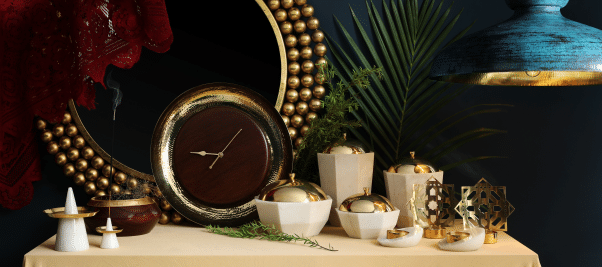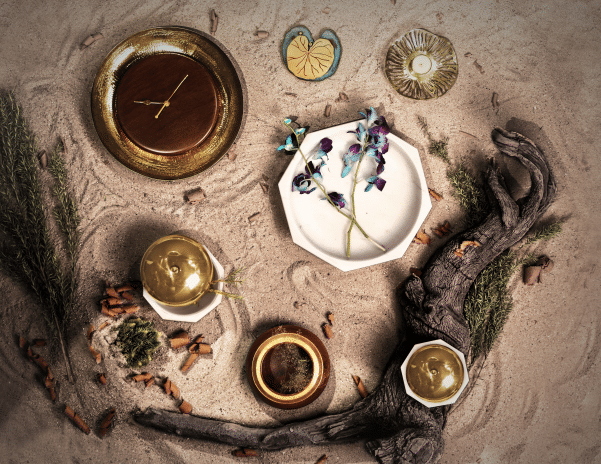With the New Year finally upon us, we are reminded of the need to look back and take stock of our impact on the World to date. It is a time to reminisce about our untenable past and a time to resolve for a viable future. Today, as we stand at the crossroads of environmental crisis and innovation, the wisdom of tenability arising from Indian households offers a timeless solution. It reminds us that sustainability is not just about zero – waste cutting – edge technology. It is also about rediscovering the value of the resources and traditions that we already have and finding modern ways to bolster them.
While the Indian Government is doing its part through schemes like “Kala Sanskriti Vikas Yojna”, the founders of Studio Trataka are doing theirs by creating sustainable living room furniture and home décor items with hand – carved designs to brighten up your homes. We strive to maintain and enhance the well – being of current and future generations while respecting and valuing cultural diversity and traditions. We take care of not just the marginalized community of Indian craftsmen, but our business practices also emphasize environmental safety. And with this sense of responsibility and commitment, we create masterpieces for the magical transformation of your work and living spaces. So, let us look at a few plastic – free festival celebration hacks for the year ahead, the Studio Trataka way!
During festivals, the most common element in every society is entertaining guests, for which you need the right equipment. Small changes can make a great impact when it comes to sustainable festival practices for communities. So, why not consider showcasing your culinary skills on our Ginkgo Leaf Platters? Their enthralling beauty will placate even the most uptight visitors during your family gatherings – one of the many benefits of using handcrafted décor items. A master craftsman has meticulously etched these surreal platters with veins, making them a perfect replica of the ginkgo plant’s leaves. Nakashi, a meticulous and time – honoured technique, transforms high – quality brass into these functional works of art. Each step in the process involves strikingly skilled hands, a deep understanding of the metal and the chisel, and a commitment to precision. Every carved piece serves as an intricate reminder of the potential for beauty in ordinary objects that many might disregard.
Our Elle Décor nominated Marble Facet Bowl and Platter Collection is a beautiful alternative. Created through the venerable marble carving technique, this collection exudes an aura of style and sophistication. Primarily seen in temple architecture and idols, marble carving saw an upswing during India’s Golden Age – The Gupta Period. The elegance and durability of marble

later inspired the creation of Taj Mahal during the Mughal Empire; while the British influence revived interest in Indian stone carving, with marble being exported for sculptures and home décor items. Today, Indian marble carving has become a global symbol of fine craftsmanship, reflecting centuries of artistic heritage and cultural depth.
Another ornate option is the Rosewood Gold Bowl Set, adorned with intricate gold leafing that serves as the radiant heart of this work of art. Sheets of the finest gold have been applied to the edges of these bowls with meticulous care. Each gentle brushstroke is a feat of artistry, as the gold leafing unfolds like a gilded tapestry. This delicate touch has bathed the bowls in a soft, golden glow, making them ideal for serving festive snacks. Gaining prominence during the Mauryan Empire when Gold Leafing was used to embellish religious and royal artifacts, this is another traditional craft worth preserving.
Last but certainly not the least, our luxurious Pillar Pendant Light will lend a golden gleam to your living room and the festivities. This brass lamp has been hammered all over – using Thathera Craft – giving it an organic dimpled effect. With roots dating back to the 16th century, this craft originates from the Thatheras, a community of skilled artisans in Punjab renowned for their exceptional craftsmanship. Over the years, with the help of Kings, this craft found its footing in other parts of India. For instance, as Jaipur was established in 1727, Thathera artisans were called upon from the Amer Fort to settle down in the newly anointed “Thatheron ki Gali” of Jaipur, Rajasthan to provide objects of daily use for homes in the emerging city. Today, Thathera craft has transcended its humble origins to become a sought – after element in interior design worldwide. Its appeal lies not just in its aesthetic value but in its embodiment of sustainable practices and support for traditional artisans.
The functional crafts of India represent a living history, all of them exhibiting a story of the region they originate from, the hands that wield them, and their unique cultural significance. By valuing and preserving these conventional crafts, Studio Trataka proudly contributes to safeguarding India’s rich heritage. We recognize the potential of these admirable craft forms to create ripples of positive change throughout the globe. Our minimalist sustainable home furnishing articles promote not just the concept of conscious consumption, but also a future where creativity, tradition, and modernity coexist harmoniously. Given the current unfeasible circumstances worldwide, let us join hands together to make a New Year Resolution to opt for eco – friendly festival fun forevermore!

